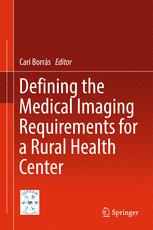

Most ebook files are in PDF format, so you can easily read them using various software such as Foxit Reader or directly on the Google Chrome browser.
Some ebook files are released by publishers in other formats such as .awz, .mobi, .epub, .fb2, etc. You may need to install specific software to read these formats on mobile/PC, such as Calibre.
Please read the tutorial at this link: https://ebookbell.com/faq
We offer FREE conversion to the popular formats you request; however, this may take some time. Therefore, right after payment, please email us, and we will try to provide the service as quickly as possible.
For some exceptional file formats or broken links (if any), please refrain from opening any disputes. Instead, email us first, and we will try to assist within a maximum of 6 hours.
EbookBell Team

4.3
48 reviewsThis book presents the patient management challenges that rural health centers face, and establishes the criteria for the type of medical imaging services that should be available in such facilities. To make the work of the center’s health practitioners more effective and efficient, the book assesses what health conditions may require medical attention in those centers. Information is provided on how to use basic imaging modalities, such as radiography and ultrasound, emphasizing the need for thoughtful service planning, careful equipment and imaging protocol selection, continuous staff training, and the implementation of quality control programs. The book is also a valuable resource for those physicians, medical physicists and service engineers who provide virtual and physical consultations to meet these needs.
Rural health centers are established to prevent patients from being forced to travel to distant urban medical facilities. To manage patients properly, rural health centers should be part of regional and more complete systems of medical health care installations in the country on the basis of a referral and counter-referral program. Thus, the centers should have the infrastructure needed to transport patients to urban hospitals when they need more complex health care. The coordination of all the activities is possible only if rural health centers are led by strong and dedicated managers.